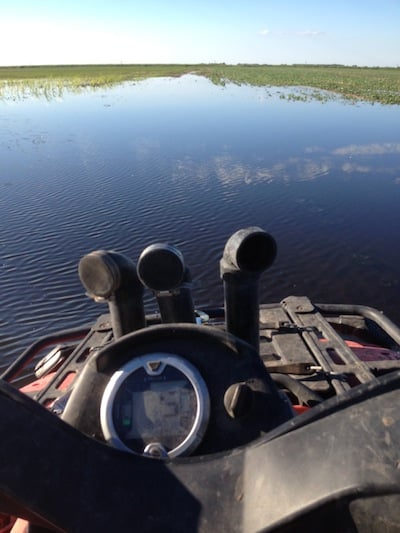With rainfall general across the Prairies — excessive in certain areas — and with flowering just around the corner, the sclerotinia stem rot risk is building. Assess the situation field by field to see which may warrant a protective fungicide.
Excessive moisture can cause leaching of nitrogen and sulphur. Assess yield potential and root depth to see whether a top dress application of N and S fertilizer is worthwhile.
Monitoring for bertha armyworm moths, diamondback moths, and cabbage seedpod weevil begins. But these aren’t the only insects to watch for. Red turnip beetle, root maggots, lygus and cutworms are out there. “Watching” doesn’t mean “spraying” but scouting is still important to know what’s happening.
Many crops are near the 6-leaf stage, which means the weed control window is closing. Aerial is one option if fields are too wet for the sprayer and you need to spray now to stay on label. If pushing on with the sprayer, wider tires and lower tire pressures can improve sprayer flotation and reduce rut depth. If you can’t switch tires, make ruts parallel with the intended direction of travel for the swather and combine so you can keep up harvest speed. Another management option for perennial weeds that have escaped but are delayed relative to the crop is to wait and use pre- or post-harvest glyphosate — especially if weeds are delayed enough to avoid seed set prior to swathing.
The CCC Crop Production team was active last week tweeting from the International Clubroot Workshop in Edmonton. Search the hashtag #ICW2013 to see the conversation. The Top 10 article this week is gleaned from those tweets. Here’s one of them:



